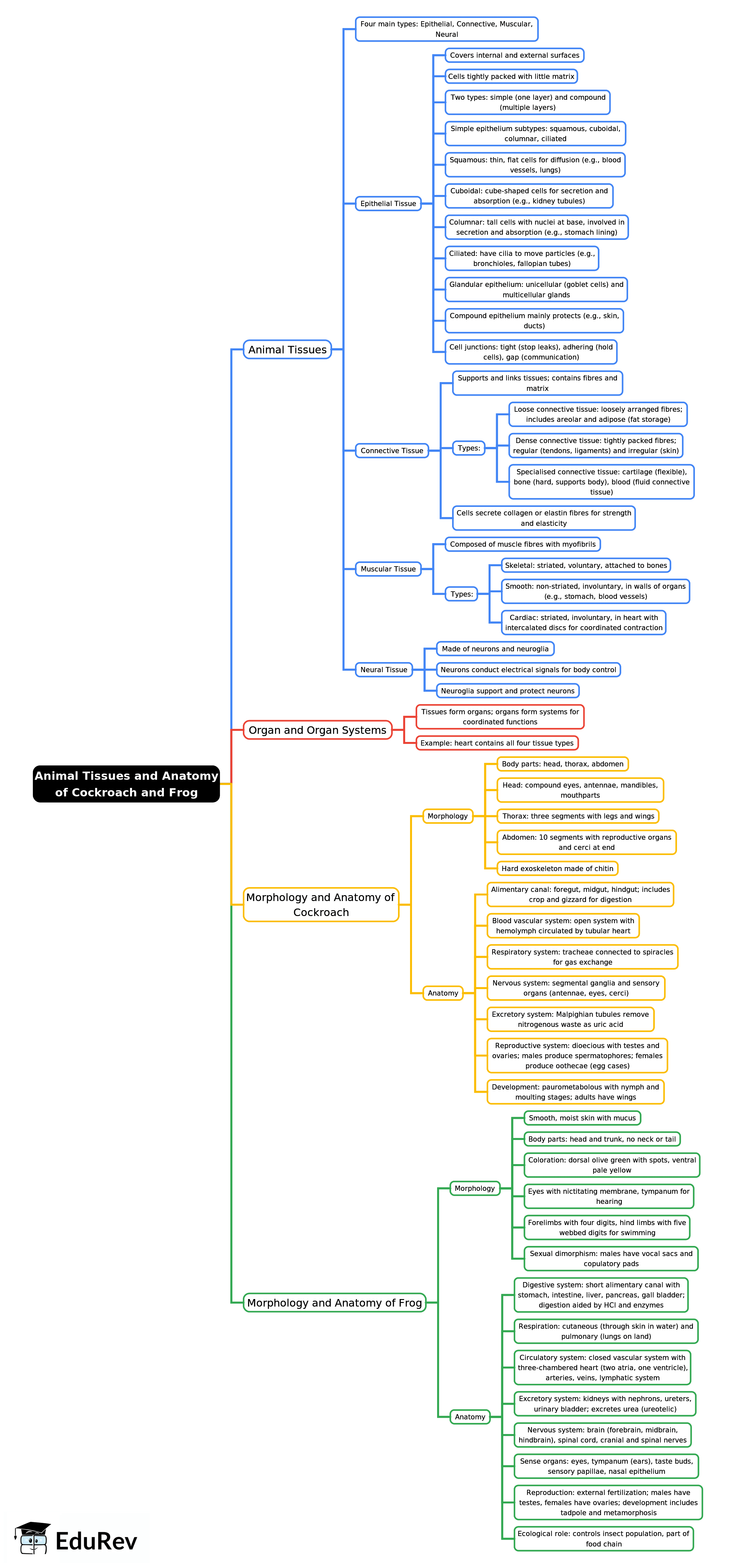NEET Exam > NEET Notes > Mind Map: Animal Tissues and Anatomy of Cockroach and Frog
Mind Map: Animal Tissues and Anatomy of Cockroach and Frog - NEET PDF Download
FAQs on Mind Map: Animal Tissues and Anatomy of Cockroach and Frog - NEET
| 1. What is the significance of NEET in the Indian education system? |  |
Ans.NEET, or the National Eligibility cum Entrance Test, is a crucial examination for aspiring medical students in India. It serves as a standardized test for admission to undergraduate medical courses such as MBBS and BDS across various colleges. The significance lies in providing a uniform platform for assessing candidates' knowledge in subjects like Biology, Chemistry, and Physics, thereby ensuring that all students are evaluated on the same criteria.
| 2. What subjects are covered in the NEET exam and how are they weighted? |  |
Ans.The NEET exam consists of questions from three main subjects: Biology, Chemistry, and Physics. The weightage is significant, with Biology comprising 50% of the total questions, reflecting its importance in medical studies. Chemistry accounts for 25%, while Physics also contributes 25%. This distribution emphasizes the need for a strong foundation in biological sciences for prospective medical students.
| 3. What is the eligibility criteria for students to appear for NEET? |  |
Ans.To be eligible for NEET, students must have completed their higher secondary education (10+2) with Physics, Chemistry, and Biology as mandatory subjects. They should also have secured a minimum percentage of marks in these subjects, which varies according to the category of the student. Additionally, candidates must be at least 17 years old on the date of admission, ensuring they are of appropriate age to pursue medical education.
| 4. How can students prepare effectively for the NEET exam? |  |
Ans.Effective preparation for NEET involves a strategic approach that includes understanding the syllabus, practicing previous years' question papers, and taking mock tests to build confidence and time management skills. Students should also focus on strengthening their conceptual understanding of subjects, making use of reference books, and considering coaching classes if necessary to guide their studies. Regular revision and staying updated with any changes in exam patterns are crucial as well.
| 5. What are the common mistakes students make during the NEET exam? |  |
Ans.Common mistakes made by students during the NEET exam include mismanaging time, leading to unanswered questions, and misreading questions which can result in choosing incorrect answers. Additionally, neglecting to review answers can also be a pitfall, as students might overlook mistakes. It's important for candidates to practice careful reading and to develop strategies for pacing themselves throughout the exam to ensure they can complete all questions.
Related Searches



















